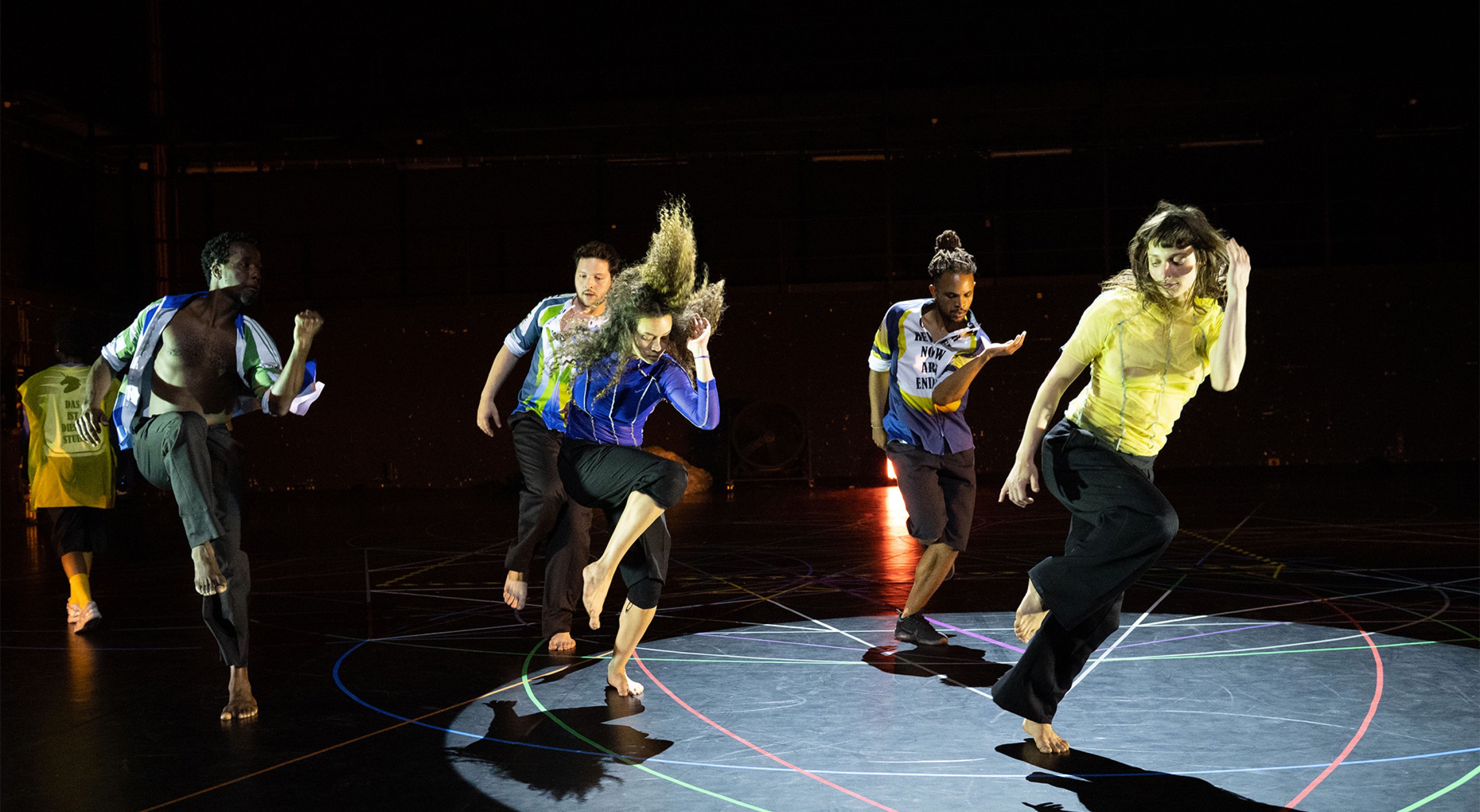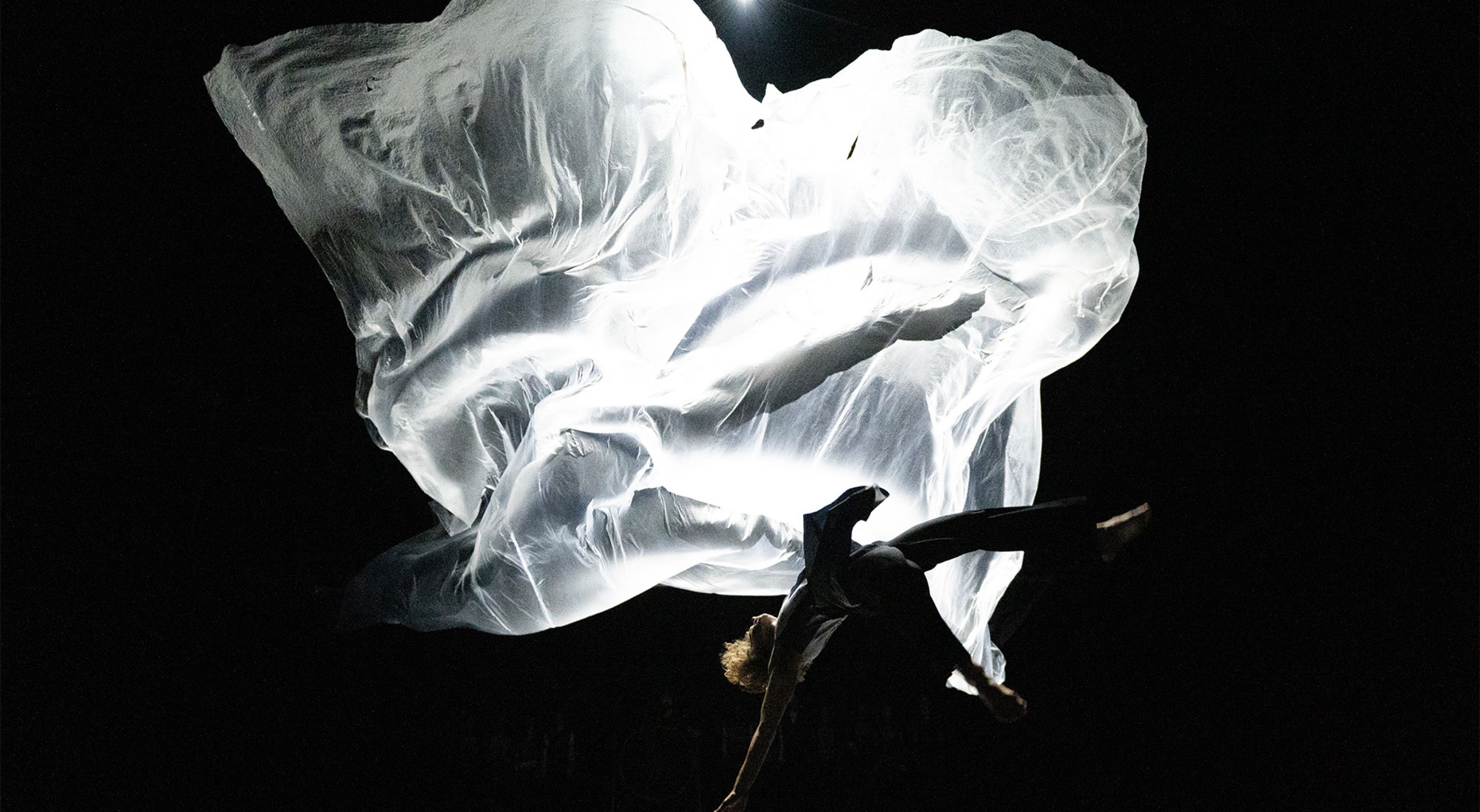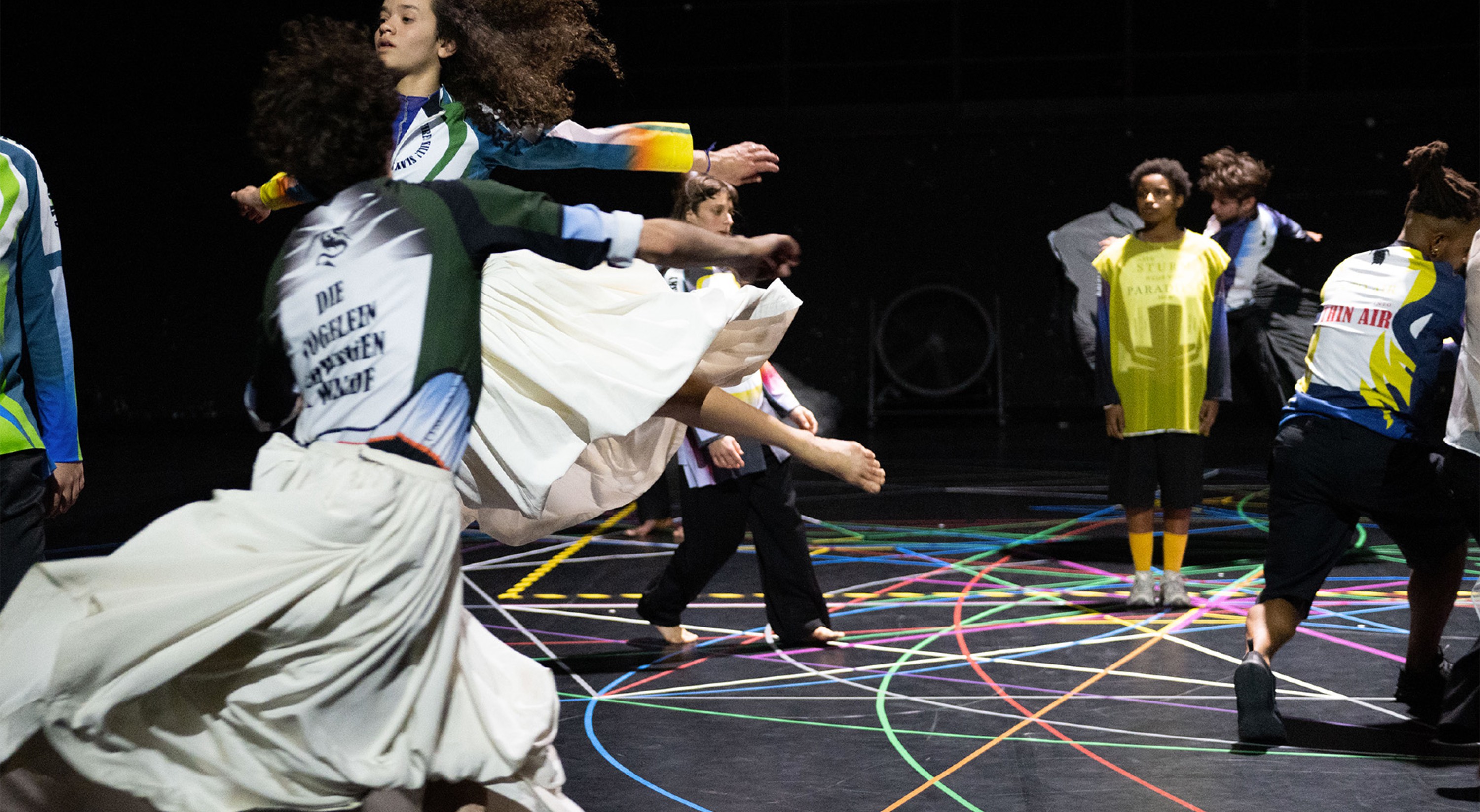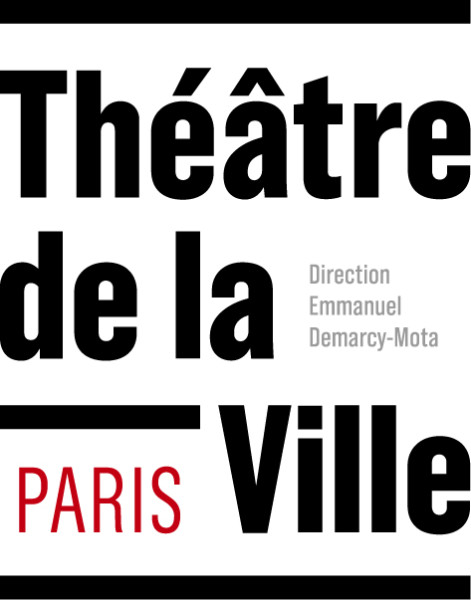Anne Teresa De Keersmaeker Meskerem Mees Jean-Marie Aerts Carlos Garbin Rosas
EXIT ABOVE d’après la tempête
octoberoct 25 – 31
Choreography, Anne Teresa De Keersmaeker
Created with and danced by Abigail Aleksander, Jean Pierre Buré, Lav Crnčević, José Paulo dos Santos, Rafa Galdino, Carlos Garbin, Nina Godderis, Solal Mariotte, Meskerem Mees, Mariana Miranda, Ariadna Navarrete Valverde, Cintia Sebők, Jacob Storer
Music, Meskerem Mees, Jean-Marie Aerts, Carlos Garbin
Music performed by Meskerem Mees, Carlos Garbin
Text and lyrics, Wannes Gyselinck
Dramaturgy, Wannes Gyselinck
Set design, Michel François
Light, Max Adams
Costumes, Aouatif Boulaich
Rehearsal direction, Cynthia Loemij, Clinton Stringer
Production Rosas
Coproduction Concertgebouw Brugge (Bruges); De Munt / La Monnaie (Brussels); Dance Reflections by Van Cleef & Arpels; Internationaal Theater Amsterdam; Théâtre Garonne, Scène européenne (Toulouse); FONDOC
With the support of the Tax Shelter of the Belgian Federal Government, in collaboration with Casa Kafka Pictures - Belfius
Rosas is supported by the Flemish Community, the Flemish Community Commission (VGC) and the BNP Paribas Foundation
With the support of Dance Reflections by Van Cleef & Arpels
The Théâtre de la Ville-Paris and the Festival d'Automne à Paris present this show in coproduction
In partnership with France Inter
Creating a harmony between past and present, blues melancholy, romantic wandering and collective impulse of walking, Anne Teresa De Keersmaeker brings us a hyphen-shaped piece, in which dance weaves together the different musical genres and eras.
Robert Johnson’s nomadic blues is synonymous with movement and wandering, but also rhythm, that of the chord progressions and cadence of this musical form born in the Mississippi delta, and which influenced XXth century rock and pop music. Following in the steps of Robert Johnson, Anne Teresa De Keersmaeker brings us a piece the shape of which signifies a return to origins, in this case those of song, but also dance. Between the walking blues and the "my walking is my dancing" motif, a basic principle behind all of her choreographic constructions, there is more than just plain analogy. Indeed, we find a deep-seated relationship with the expressive power of the simplest of aesthetic elements. Weaving in the metaphor of the footstep, collective walk and individual sidestep, she links together the different musical eras and genres, ranging from Franz Schubert’s lied to the American bluesman ballads. In order to bring into the present these melodic fragments, Anne Teresa De Keersmaeker turns to the musician Meskerem Mees, whose voice maps out different musical heritages. As the various cover versions and variations play out, so too are the encounters between the romantic Wanderer and the Afro-American vagabond.
In the same place



